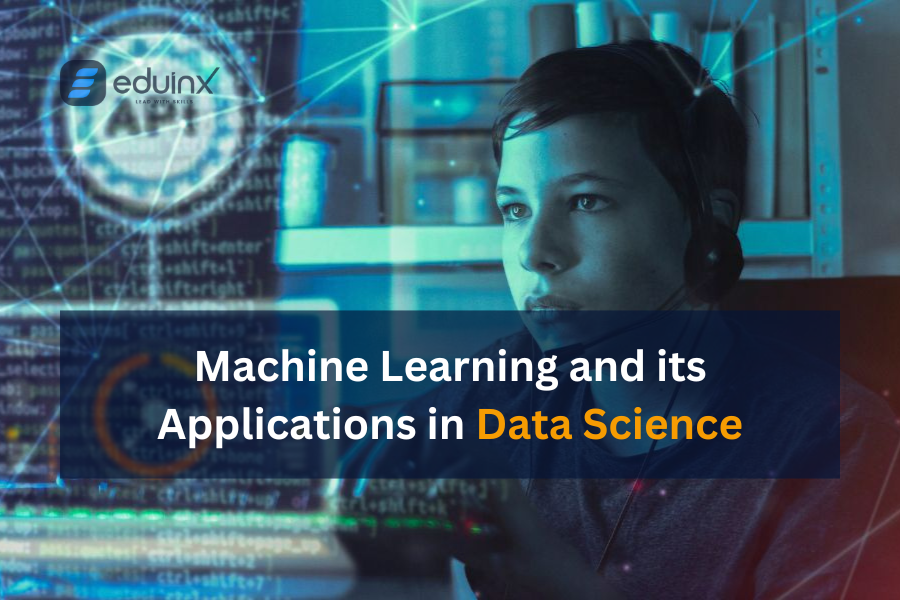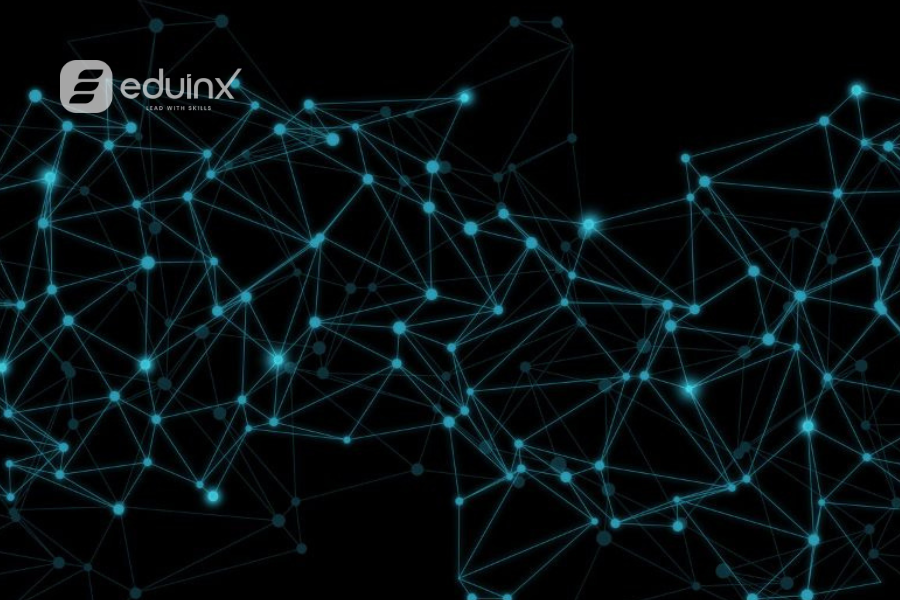Introduction
Artificial intelligence has revolutionized several organizations across various industries. It has optimized operations, decreased costs, and improved overall productivity. In data analytics, e-commerce, and marketing, it has influenced leading organizations in making challenging decisions. It achieves this by analyzing a vast amount of data quickly and suggesting a suitable path based on its findings through machine learning algorithms. The prime application of AI in data science is that it is used to resolve problems and set the right path to lead a project.
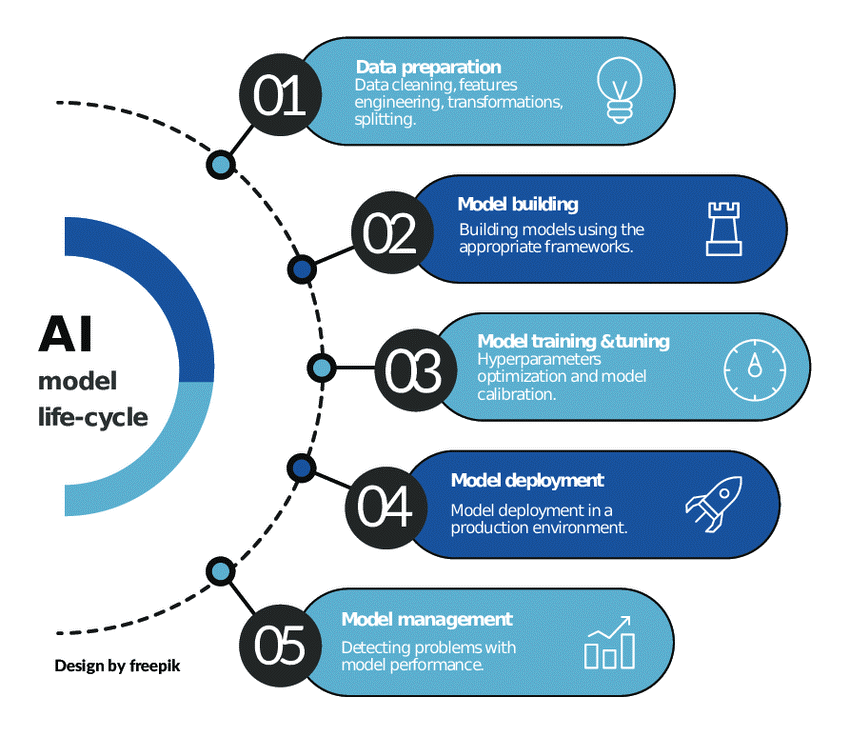
An AI development lifecycle starts with problem definition, stakeholder analysis, gathering requirements, access feasibility, defining the criteria for success, analyzing potential biases, performing ethical impact assessment, and ensuring regulatory compliance. Whether you are a professional or a fresher, it is vital for you to learn the lifecycle of AI in data science. Here is a gist of the lifecycle of AI.
In this blog, you will learn:
- ● Data acquisition and model development
- ● Model evaluation and deployment
- ● Machine learning and model monitoring
- ● Benefits of implementing a robust AI project lifecycle
Data Acquisition and Model Development
Data acquisition or data collection is the first component of a data lifecycle. Here, the objective of an AI system is to gather raw material to train AI models that are collected from multiple sources, this includes data augmentation or data generation. It evaluates and identifies data sources, implements data acquisition methods, applies data sampling techniques, checks data quality, labels data, establishes data governance, ensures privacy, and manages consent.
The next step of the lifecycle is data preparation. Without proper data preparation, AI models are likely to deliver inaccurate results. Refined data enables the AI system to make decisions with improved accuracy. A data science engineer is responsible for cleaning, integrating, and transforming data. Followed by this it is ideal to augment the dataset, label the data and version it, and develop data pipelines.
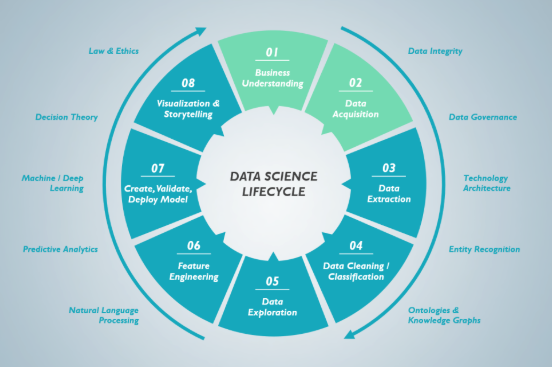
In the model design phase, the architecture of the model needs to be defined, this includes the layers and nodes in a neural network. This is sure to ensure efficient training, validation, and testing of the AI system. Here, an engineer is expected to select the model, design the architecture, optimize hyperparameters, apply transfer learning, implement ensemble methods, incorporate interpretability, and incorporate security measures as well.
Model Evaluation and Deployment
Once the model is designed, a data science engineer will expose the model to the prepared data. This model will learn patterns and relationships from this data and make decisions based on this data. This process will continue until the model achieves an appropriate level of accuracy. Algorithms play an essential role in model training as they adjust the model’s parameters to minimize errors. It is also important to remember that the quality of training improves the effectiveness of the AI system. A data science engineer’s role would be to implement training algorithms, select loss functions, apply regularization, apply regularization, apply regularization, and optimize batch size. They must also distribute training across multiple GPUs, save checkpoints, and monitor the training progress.
Once the model has been designed, its performance needs to be assessed with a separate validation dataset. Here, the model’s ability to predict accurate results is tested in a new data set. A data science engineer needs to apply evaluation metrics for the specific AI task, implement cross-validation methods, assess biases, conduct robustness testing, perform A/B testing, analyze errors, and evaluate interpretability.
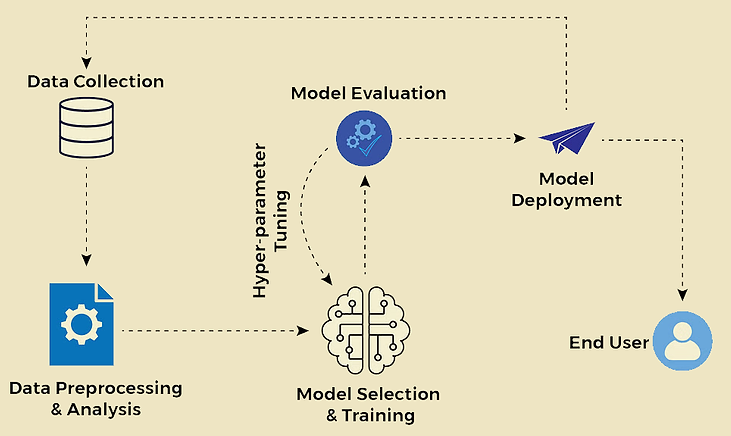
After the model has been trained and assessed, it needs to be deployed into the production environment. Here, the model takes new data, makes predictions, and delivers accurate results in real-time or batch mode depending on the scenario. A data science professional needs to choose the deployment strategy, implement model serving, containerize the model, ensure optimum integration, and ensure scalability. They also need to ensure version control, perform integration testing, create a comprehensive document, and implement appropriate tools to ensure monitoring.
Model Monitoring
The final part of the AI lifecycle is model monitoring, which ensures the model performs at its best over a period of time. The model is monitored using relevant metrics and feedback. Its performance is checked against its predictions or any decline in the accuracy or effectiveness of the signals. This is an ongoing process that will ensure that AI remains adaptable in the long run.
The final phase of the AI lifecycle management involves performance monitoring, data drift detection, anomaly monitoring, feedback loop implementation, updating the model to safeguard it from vulnerabilities, and redeploying it whenever required. All these operations are powered by machine learning algorithms. In addition to all this, AI projects need to adapt to changes in requirements, cope with unexpected issues with the data, and stay sustainable. The same process applies to the gen AI lifecycle also.
Benefits of Implementing a Robust AI Project Lifecycle
A robust AI project lifecycle helps data science teams plan AI projects optimally and ensure a higher success rate. It can flag potential issues that are fresh and mitigate them. It also ensures improved efficiency and productivity with a structured project life cycle and a streamlined workflow. A well-defined project life cycle ensures enhanced quality of the AI solution. Also, periodic maintenance and updates are also vital. A robust AI project lifecycle ensures enhanced resource allocation as most projects require significant resources including time, human experience, and computational power. This ensures that resources are balanced at each stage of the life cycle.
At Eduinx, you can learn the AI lifecycle in great detail through our lecturers. Unlike a conventional online learning platform which consists of watching various videos and going through hours of reading, Eduinx provides a virtual classroom environment that enables learners to connect with the lecturer and resolve their doubts at the time. You can learn from trainers who are industry leaders in the field of generative AI and data science. Eduinx also provides hands-on training through a practical approach and capstone projects. They also offer career assistance and placement assistance. You can get in touch with them here for more information on the course.
Reference links:
https://www.datascience-pm.com/ai-lifecycle/ https://www.paloaltonetworks.com/cyberpedia/ai-development-lifecycle https://www.linkedin.com/pulse/generative-ai-end-to-end-life-cycle-mahesh-tripathy-tqilf https://coe.gsa.gov/coe/ai-guide-for-government/understanding-managing-ai-lifecycle/#:~:text=The%20AI%20lifecycle%20is%20the,%2C%20development%2C%20and%20deployment%20phases



